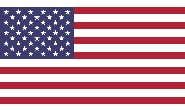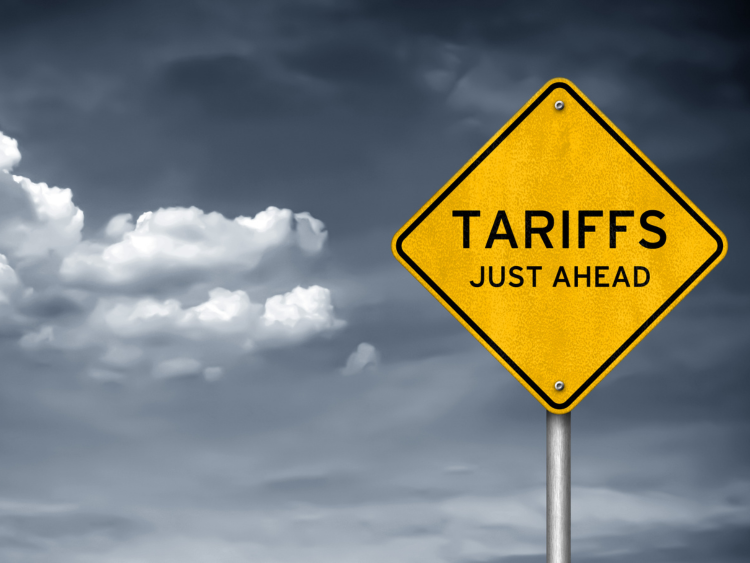Trade Cases

Trump's Buy American Order Increases Steel Use to 95 Percent
Written by Sandy Williams
July 16, 2019
To stiffen his Buy American policies, President Trump signed an executive order on Monday raising the threshold for American-made steel used in federal projects from 50 percent to 95 percent.
The executive order states that the Federal Acquisition Regulatory Council is to “consider proposing” within 180 days amendments to the Federal Acquisition Regulation (FAR) that will “most effectively carry out the goals of the Buy American Act and my Administration’s policy of enforcing the Buy American Act to its maximum lawful extent.”
“With Monday’s signing of Buy American III, President Trump has moved towards increasing the Eisenhower domestic content threshold for American-made iron and steel from 50 percent to 95 percent,” said White House trade advisor Peter Navarro. “He is also recommending raising the threshold for all other products from 50 percent to 55 percent, with consideration of eventually raising the threshold to 75 percent.”
The order was signed at a White House “Made in America Day,” which showcased manufactured products from all 50 states. It’s the third order Trump has issued regarding the “Buy American” policy.
The first executive order was signed in April 2017 asking U.S. agencies to identify loopholes and exceptions to foreign bidders and present recommendations to the White House. The second order, in January, directed federal agencies to use U.S.-produced materials in infrastructure projects “to the greatest extent practicable.”
Said President Trump, “Through historic tax and regulatory reform, workforce initiatives, trade enforcement, and the negotiation of new trade deals, my Administration is fulfilling our promise to make ‘buy American and hire American’ the new standard.”
Thomas J. Gibson, president and CEO of the American Iron and Steel Institute, called the executive order a “positive step” for the health of the U.S. steel industry. Gibson issued the following statement:
“This announcement is another positive step in ensuring the fullest possible implementation and enforcement of existing domestic procurement laws and ensuring the steel industry remains competitive. Strong domestic procurement preferences for federally funded infrastructure projects are vital to the health of the domestic steel industry and have helped create manufacturing jobs and build American infrastructure. We applaud President Trump for once again affirming his commitment to the steel industry that built, and continues to build, our nation.”
Nucor CEO John Ferriola commented, “We believe it’s good for our country, and it’s certainly good for the industry, I can’t deny that.”
In Canada, the order was seen as another barrier for the nation’s businesses and steel industry. Still reeling from 25 percent steel tariffs that were lifted only last month, the new restrictions on steel use will further limit the bidding ability of Canadian companies on U.S. projects. CBC News reports that Canada’s premiers have called on Prime Minister Justin Trudeau to seek exemption from the new sourcing provisions.
“We will be calling on our federal government to provide a stronger leadership role … in asking for an exemption with respect to the Buy American policy that is damaging many of our industries here in Canada,” said Saskatchewan Premier Scott Moe.
Dan Ikenson, director of trade studies at the Cato Institute, said that reducing the pool of suppliers will cost the government more for material procurement. “When we artificially reduce the pool of qualified suppliers or the variety of eligible supplies that can satisfy procurement requirements, projects cost more, take longer to complete, and suffer from lower quality,” he said.
Consequences of Trade Policy
President Trump has frequently taken credit for “saving the steel industry,” pointing to new investments at steel companies and record profits last year. However, some economists note that the boost from the steel tariffs and tax law changes was short lived. Steel prices fell from a high of more than $900 in 2018 to less than $520 per ton in 2019, according to SMU data. U.S. steel producers have raised prices twice in the last month to counter the falling trend.
Tariffs reduced competition from foreign sources but also hurt steel-using manufacturers who were forced to pay higher prices for inputs. General Motors and Ford, priorities on Trump’s protected industry list, reported that steel tariffs cost them an estimated billion dollars each. Retaliatory tariffs from a host of countries hit by Section 232 tariffs elevated costs for consumers.
Steel mills operating with electric arc furnaces were able to ramp up production and produce steel more efficiently than their blast furnace competitors. After reopening idled facilities and announcing new investments, U.S. Steel was forced to idle two blast furnaces in June citing competition and softening demand.
In a quote from the Washington Post, Key Banc Capital Markets steel analyst Phil Gibbs noted the industrial economy has weakened in 2019, affecting demand for steel and other goods. The impact on the U.S. steel industry from Trump’s new sourcing provisions may be negligible, he said. “Infrastructure projects are highly regional anyway, meaning if you want to do a project, you’re most likely going to be using steel from a U.S. company because you want it on a just-in-time basis. It’s tough to know if it [Trump’s executive order] will have any impact at all.”

Sandy Williams
Read more from Sandy WilliamsLatest in Trade Cases

Leibowitz: Renewed trade war with China over rare earths
On Oct.10, President Trump announced major increases in tariffs on Chinese goods. The trigger was a new regime of export controls on rare earth metals and products using those elements, including magnets, capital equipment, and catalysts for catalytic converters in cars and trucks.

Industry piles on new Section 232 steel derivative inclusion requests
The Department of Commerce received 97 submissions from producers, manufacturers, and groups seeking Section 232 tariff coverage for steel and aluminum derivative products.

Price on Trade: New EU steel tariffs don’t mean the US should weaken its stance
Any steel imports into the EU that exceed the new, lower quota level would be subject to a 50% tariff, which represents a major increase from the EU’s current 25% out-of-quota tariff. This move would largely align the EU’s steel tariff rate with Canada and the United States.

Global steel forum sets 2026 framework deadline as US ups pressure on excess capacity
Global steelmakers sounded the alarm Friday over the deepening excess steelmaking capacity crisis. Ministers at the Global Forum on Steel Excess Capacity (GFSEC) in Gqeberha, South Africa, pledged to...

CRU: China’s indirect steel exports find new destination markets
The boom in China’s direct steel exports has not stopped this year, even with a rise in protectionist measures globally. The increase is driven by...
